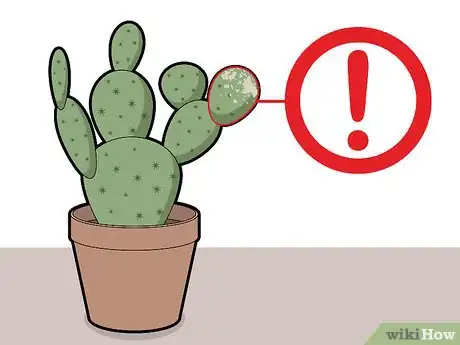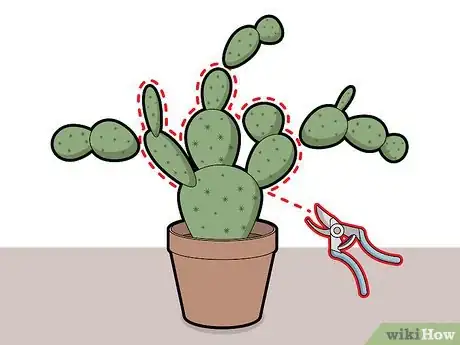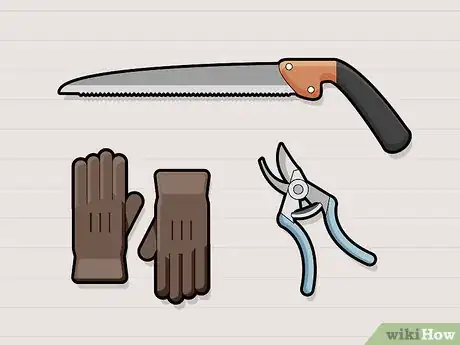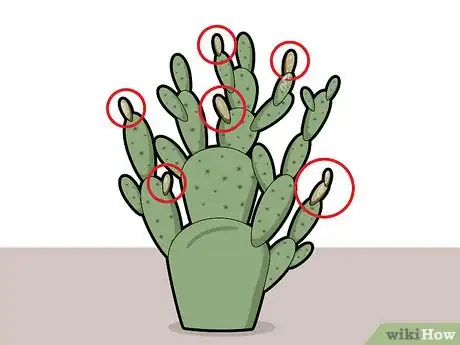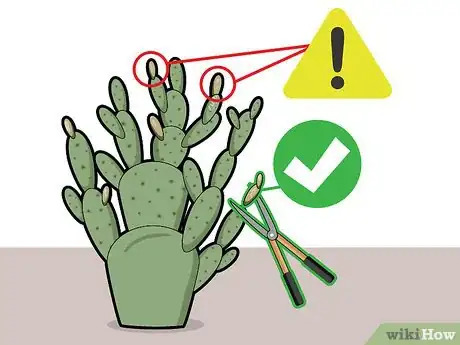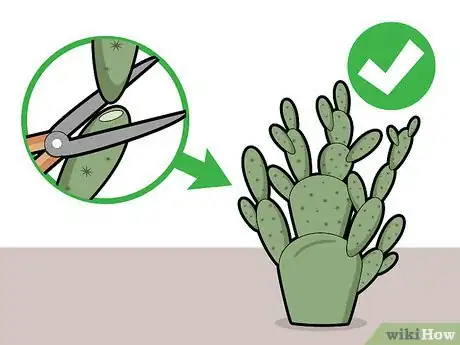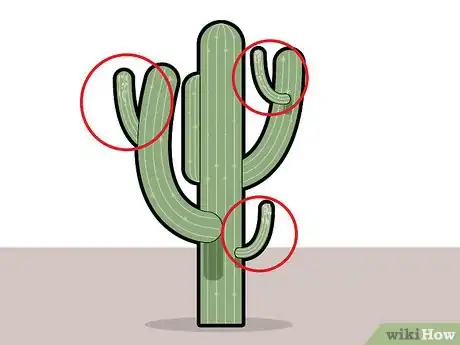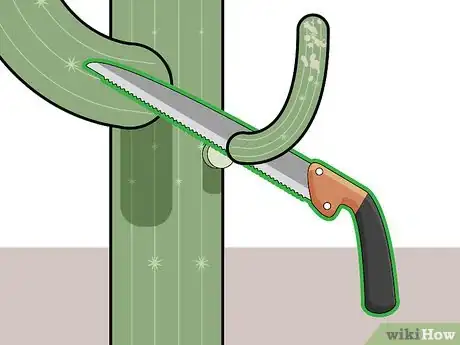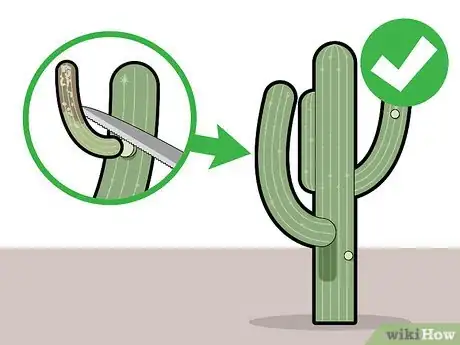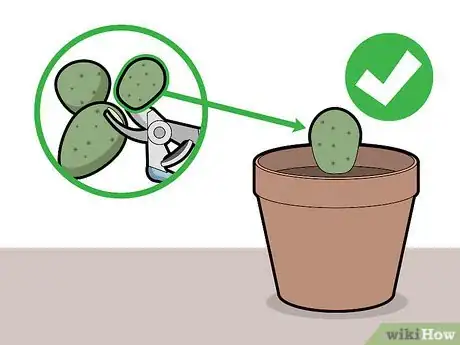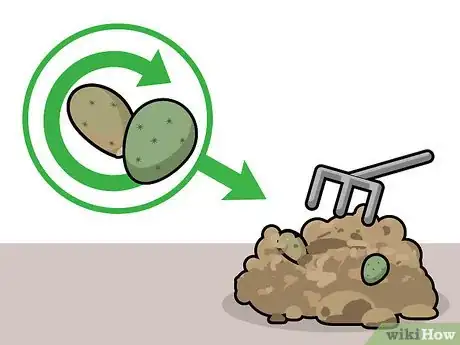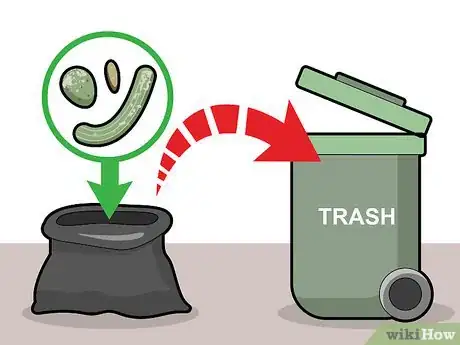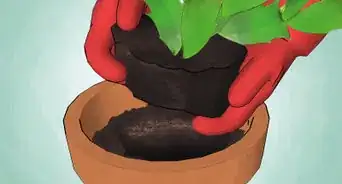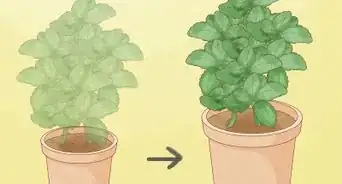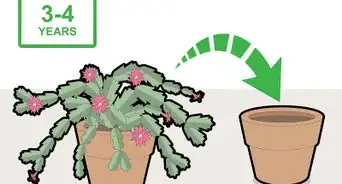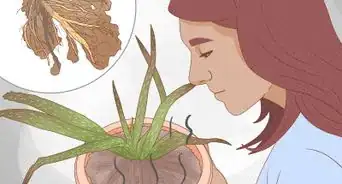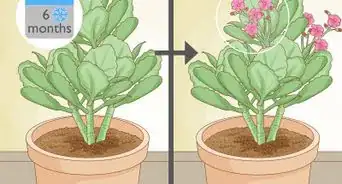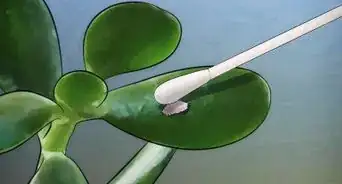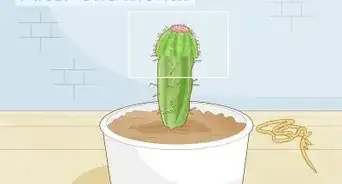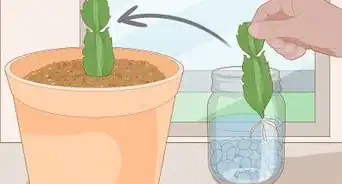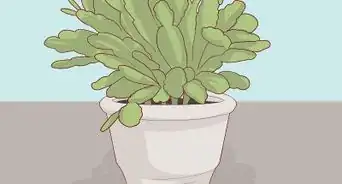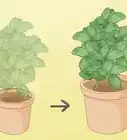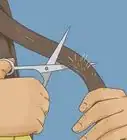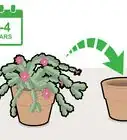This article was co-authored by Chai Saechao. Chai Saechao is the Founder and Owner of Plant Therapy, an indoor-plant store founded in 2018 based in San Francisco, California. As a self-described plant doctor, he believes in the therapeutic power of plants, hoping to keep sharing his love of plants with anyone willing to listen and learn.
This article has been viewed 54,038 times.
How do you know when it's time to trim or cut back your cacti? Cacti are an especially hardy plant that are most often found in remote, drought-prone conditions because of their unique systems of water storage and protection. They're an increasingly popular landscaping plant because they don't require a lot of maintenance. But occasionally, you'll need to trim your cacti to keep them healthy and looking great.
Steps
Preparing to Trim a Cactus
-
1Check for diseased portions of your cactus. This is the most important reason for deciding to prune. If you catch a diseased portion before it spreads throughout the whole plant, you can save a cactus from being completely destroyed.
- Fungi and bacteria are the most common type of disease the cacti face.[1]
- Dry rot or fungal growth are often clear, visual signs that something is amiss with your plant and should be treated immediately.
-
2Remove dried or dead segments. As with any plant, pieces of a cactus may simply not get enough water, for example, and will begin to dry and turn brownish. This does not necessarily mean disease has taken hold of the plant. Although not required, it can be more appealing to cut away these segments to maintain just the greener and healthier parts.Advertisement
-
3Plan to cut back overgrowth as needed. In certain climates, cacti can really take off, growing far beyond what might be intended for your garden. If the plant becomes disproportionate or is beginning to bend and break due to the weight of overgrowth, pruning the cactus back can help to bring things back to a more balanced state.
- Look for leaning sections that might even have clear breaks in the plant to determine if overgrowth is occurring.
- Sometimes a plant has simply grown too tall or wide for its setting. This is more of a visually challenging procedure, but a smaller, well-pruned cactus can simply look better.
-
4Shape your cacti to accommodate its setting. Similar to overgrowth, a cactus can begin growing in one direction over another or just be asymmetrical - this is nature after all! If your landscaping calls for more balance and shaping, pruning is an option to help achieve a more controlled look.
-
5Prepare your equipment and clothing. Whether or not you are cutting away diseased portions, having clean tools can make sure that the pruning does not affect the cactus more than is needed. Padded and prickly pear style cacti usually can be pruned with smaller pruning shears or garden clippers. The larger columnar cacti will more likely need a saw.
- Tools should be cleaned with soap and warm water, or if they have been used on diseased plant material already, use ¼ cup of bleach to 1 gallon of water.[2]
- Select heavier clothing that will not only cover as much skin as possible but will also prevent the cactus spines from penetrating the cloth and hurting you.
- Since you will be working with your hands, leather gloves are perhaps the most important component to keeping yourself from getting pricked.
- You may also wish to tape your sleeve cuffs over your gloves to prevent spines from falling up into your sleeve. The same can be done with pant cuffs at your ankle in case you are walking into a denser section of cacti to prune.
Pruning a Padded or Prickly Pear Cactus
-
1Locate the pads to be cut back. Before jumping in hands first, evaluate the pads you will need to remove. Remember that less is more. Cutting away too much at once can also hurt the plant if it is relying on the water and sunlight that those sections provide.
- If the plant is quite large, plan ahead by choosing the section you will start on. You may uncover more work as you cut away, but having a general idea of what you are planning to cut is best.
- You will be removing entire pads, not just portions of a pad. Make sure that this does not cut away more than you intend.
-
2Start in a safe-to-reach section. If you are not able to safely reach the section to trim, do not attempt it. A ladder can sometimes assist in getting to a hard-to-reach portion or change your angle in order to easily reach what you need. You will be starting from the outer edges and working your way in, as necessary.
-
3Prune just enough to achieve your goal. For this type of cactus, you want to make cuts at the joints near the base of the pads. Methodically cut a pad, setting it to the side safely, and continue. From the outer edges, work your way inward, cutting just enough to either remove all dead or diseased portions or get the look you are wanting.
- Do not simply cut across a pad to remove a section. This will kill the pad regardless and require additional pruning.[3]
- For aesthetic pruning, you may need to cut a pad or two at a time and then step away to see the progress. This can help to prevent over-pruning.
Pruning a Columnar Cactus
-
1Decide which sections will need to be cut. Column-shaped cacti often have less sections than other types, so it can be crucial to decide only what is needed to be cut. The columns store water and collect sunlight for the whole plant, so removing too much can be dangerous for the plant.
-
2Saw the necessary portions. Pruning the columns will be similar to sawing a tree branch off. You will want to make preliminary cuts a few inches above the base of the column, which is where the final cut is going to be made.
- The first cut should be about ¼ of the way into the column, on the top or inner side, a few inches above the base.
- A second cut (similar in size) approximately 1 inch below the first, but on the bottom/outer side, will then help to control the weighted fall of the column when you make the final cut.
- Before making your final cut, make sure the area is clear where the cut portion will fall. From a safe place, starting at the top, inner side at the base where the cactus column has begun growing, saw through completely.
-
3Work through the unhealthy or overgrown sections. You may continue repeating these types of cuts as needed to remove all unhealthy or overgrown areas. Keep in mind not to overdo it though so the plant does not suffer from over-pruning.
What to Do with the Removed Cacti Pieces
-
1Replant the healthy pieces. Both types of cacti can actually be replanted. The pads can be directly planted either in a pot or even simply laid atop fresh soil and will begin to root. Column branches will need to callous for a few days (depending on size) before replanting.
-
2Compost dead or unwanted parts. If you do not want additional cacti plants or the material is already dead, you can simply compost the cacti as you would other organic matter to be used as fertilizer for your next gardening project. You could also consider gifting pieces that were pruned but still look pleasant!
-
3Discard diseased material safely. When collecting the diseased portions that were removed, take care not to let them contact other plants or soil. Bag the material and dispose of in your regular, un-recycled garbage. You can also take it directly to a landfill to ensure that the diseased material does not propagate to other gardens or growth areas.
Expert Q&A
Did you know you can get expert answers for this article?
Unlock expert answers by supporting wikiHow
-
QuestionHow often should I water a cactus?
 Chai SaechaoChai Saechao is the Founder and Owner of Plant Therapy, an indoor-plant store founded in 2018 based in San Francisco, California. As a self-described plant doctor, he believes in the therapeutic power of plants, hoping to keep sharing his love of plants with anyone willing to listen and learn.
Chai SaechaoChai Saechao is the Founder and Owner of Plant Therapy, an indoor-plant store founded in 2018 based in San Francisco, California. As a self-described plant doctor, he believes in the therapeutic power of plants, hoping to keep sharing his love of plants with anyone willing to listen and learn.
Plant Specialist
Warnings
- As spines can easily and possibly unknowingly be transmitted to clothing, you should wash your pruning clothes separate from other clothes to avoid spreading them further.⧼thumbs_response⧽
Things You’ll Need
- Protective clothing - long sleeves and pants
- Closed-toe shoes
- Leather (or otherwise impenetrable) gloves
- Garden shears or clippers
- Garden or regular hand-saw
- Extension/pole saws can sometimes be safer
- Trash bag(s)
